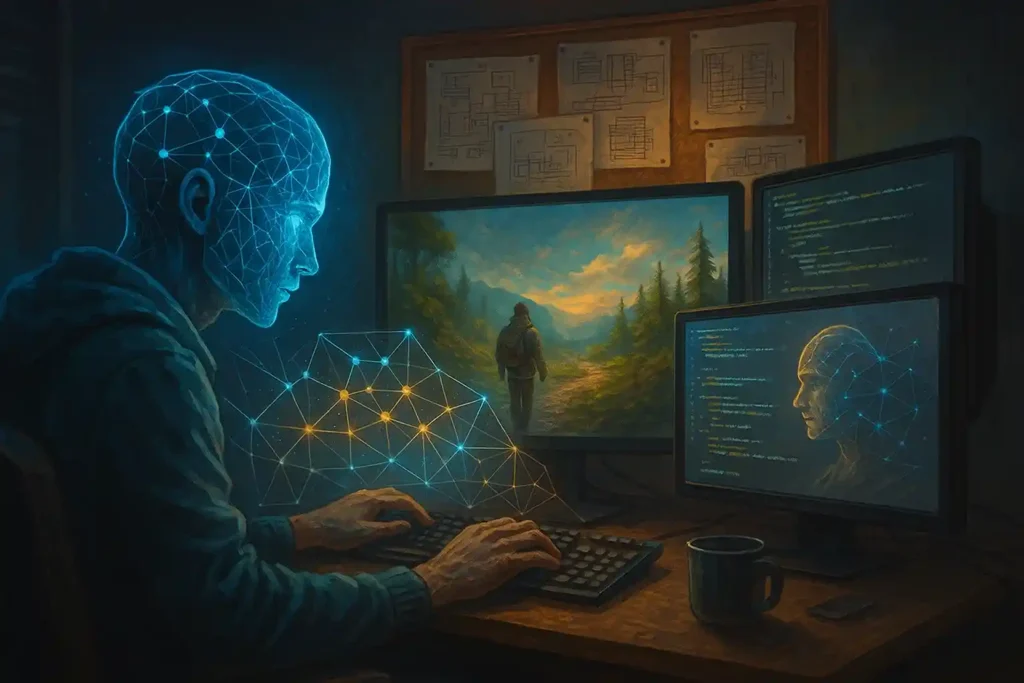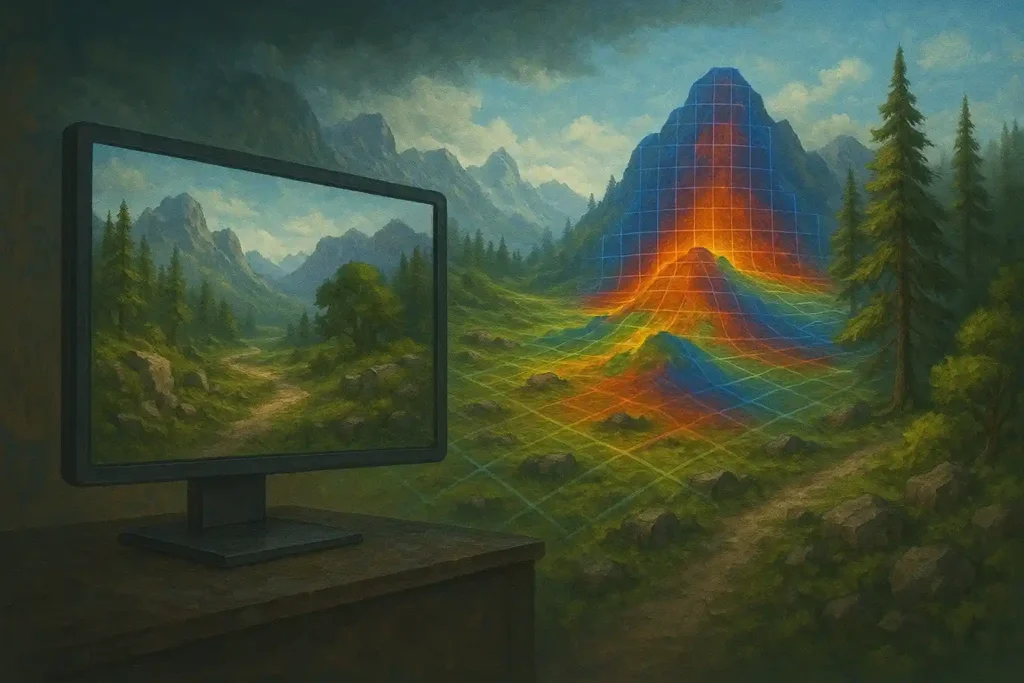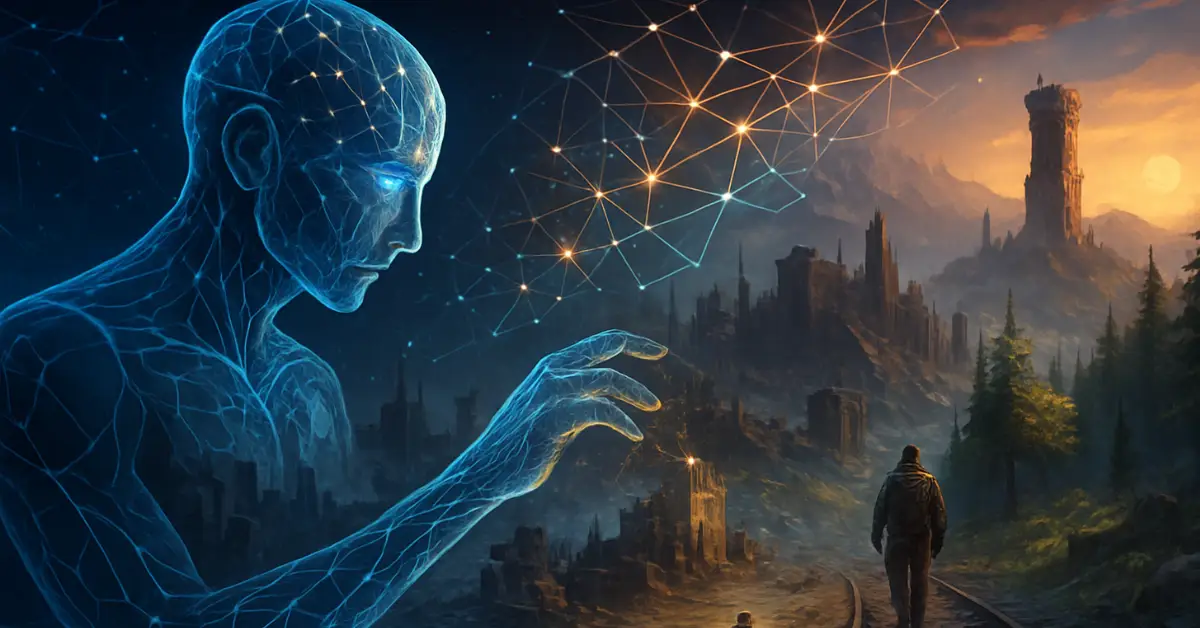The gaming industry is constantly evolving and advancing with time, and one of the most important factors that is shaping the future of gaming is the integration of machine learning (ML) into procedural content generation (PCG). In simple terms, procedural generation is a method where game content—such as levels, environments, quests, and even entire worlds—is created algorithmically rather than handcrafted by developers.
The integration of machine learning makes this process smarter, adaptive, enhanced, which is capable of producing highly personalized and immersive gaming experiences. As we step into 2025, machine learning-driven procedural generation is no longer just a concept; it is actively transforming how games are designed, played, and enjoyed. From randomly generated dungeons to vast open worlds that feel infinite. Procedural generation has powered some of gaming’s most fascinating experiences. In 2025, we will see major upgrades and advancements in the gaming field using machine learning.
In this article, we will learn how machine learning in procedural generation is shaping the future of gaming in 2025. “Why it matters, and what’s coming next”. Whether you’re a gamer or someone curious about AI in game design, let’s dive into this and explore this magical world of Artificial Intelligence and Machine Learning.
What Is Procedural Generation?

Before going into the depth of this topic, let us understand, what procedural generation is? Procedural generation is a method that developers use to automatically create game content using math and algorithms instead of designing everything by hand.
For example, in No Man’s Sky, the game builds billions of planets with different landscapes, animals, and plants using math rules. This means every planet you visit feels unique without developers making each one themselves.
Procedural generation has been around for years in games like Minecraft (random worlds) and Diablo (random dungeons). It saves time, adds replayability, and makes games feel endless. These generated worlds can often be repetitive and boring as they follow a same pattern. So, to overcome this limit and make things better, machine learning steps in and changes the game.
How Machine Learning Enhances Procedural Generation

In 2025, companies are already using AI-driven procedural generation to make games even more enhanced and exciting. Machine learning advances procedural generation and takes it to the next level, making game content even smarter and creative. ML studies pattern, learns from data, and then creates content after analysing everything that feels more natural and realistic. For example: tools like Tencent’s GameGen-O can build entire open-world environments using ML, creating cities, forests, and roads that feel alive. This is a huge leap forward in the future of game designing.
- Learning from Real Data: ML can look at real-world maps, landscapes, or even player behavior to create game worlds that feel more realistic. For example, it can study forests, mountains, or cities and then generate game maps that look like they were hand-designed.
- Making Unique Content: Unlike old procedural generation that repeats patterns, ML can create one-of-a-kind levels, characters, or stories. Imagine a game where every dungeon you enter has a totally new layout, enemies, and treasures—ML can do that!
- Adapting to Players: ML can watch how you play and adjust the game to fit your style. If you love exploring, it might generate bigger maps with hidden secrets. If you prefer fighting, it could create tougher enemies.
- Player-Centric Design: Machine learning analyzes player preferences, skill levels, and in-game decisions to personalize challenges and storylines, making each playthrough unique and engaging.
- Efficiency for Developers: ML-powered PCG reduces the time and cost of game development by automating content creation while maintaining high quality and variety.
Real-World Examples of Machine Learning in Procedural Generation

Already, many popular games and game studios using machine learning to push the boundaries and creativity of procedural generation.
- No Man’s Sky: This game is famous for its vast procedurally generated universe. But now this game uses ML technology to enhance and refine planet generations, thereby creating a more diverse and realistic and visually enhanced ecosystem.
- Minecraft: While mostly traditional PCG, recent mods and updates incorporate ML to generate more natural terrain and structures, enhancing immersion.
- Ubisoft’s LEIA Project: Ubisoft’s research division developed AI-driven NPCs that adapt their behavior based on what actions the player takes, merging procedural generation with machine learning for creating more smart, realistic NPCs characters.
- Elden Ring: Nightreign (May 2025 Release): This is a new game in 2025 that uses ML to generate a unique playable memory for each player. Every time you dive into a character’s past, the game creates a new mini-world with its own story, enemies, and challenges. This game truly reflects the power and potential of machine learning in game development.
- Rise of Indie Games: Small studios are using ML tools to compete with big companies. For example, an indie game called Mycopunk (revealed at PAX East, May 2025) uses ML to generate unique fungal worlds for its co-op FPS gameplay. This shows how AI in game development is helping smaller teams create big, impressive games.
Why Machine Learning in Procedural Generation Matters

- More Immersive Worlds: Because of ML, the characters, ecosystem and overall design of the game look visually enhanced and realistic, which was not possible in the old methods. You can see and feel the differences yourself in the games that are made with the help of ML integration. Just imagine forests with animals that hunt, rivers that flow naturally, or cities with NPCs who act like real people.
- Replayability: With the help of ML, games can keep creating new content, so you never run out of things to do. For example: Diablo IV with dungeons that never repeat—every run feels fresh and new.
- Reduced Development Costs and Time: Developers can focus on core gameplay and storytelling while ML algorithms handle the repetitive and time-consuming task of content creation.
- Personalized Experiences: With the help of ML, game preferences can be adjusted as per your wish. If you’re a casual player, it might make levels easier. If you’re a pro, it can add tougher challenges. This makes games more accessible & fun for everyone.
Challenges and Considerations
- Complication: ML is hard to use and needs a lot of computer power. Small studios might struggle to afford the tools or hire experts to use them. Developers must carefully tune algorithms to maintain fun and coherence.
- Computational Costs: Training and running ML models require significant computing power, which can be a hurdle for smaller studios or real-time generation on limited hardware.
- Player Trust: Some gamers worry that AI-made content might feel soulless compared to human-designed levels. So, Developers need to use ML in such a way that game story, contents feel realistic and should give lifelike feel.
The Future of Gaming with Machine Learning (Beyond 2025)

- Entirely AI generated Games: Entire games created dynamically by AI & ML, from world-building to story generation, characters & music offering unique experiences for every player. Tools like Google’s GameNGen (which created Doom gameplay in 2024) are already showing this is possible.
- Dynamic Storytelling: AI-driven narratives that evolve in real-time, responding to player choices with unscripted, personalized story arcs.
- Better Multiplayer: ML can create dynamic multiplayer maps that can change during the match, keeping the freshness and uniqueness of the game intact.
- Cross-Platform and Cloud Integration: ML-powered PCG leveraging cloud computing to deliver vast, detailed worlds even on less powerful devices.
- Infinite Stories: With the ML, we can create as many stories we want with game contents like quests, challenges etc. Example: The Elder Scrolls VI (rumored for 2026), every player could have a unique storyline that changes as they play.
Recommended Academic Journals
Check Out More
Neural Rendering in Games: The Future of Graphics Beyond Ray Tracing (2025)
Revolutionary AI in Gaming: Smarter NPCs, Procedural Worlds & The Future
Connect with GamesNerdz for more latest Gaming news and tips!!!

